Water purification systems for a country house: filter classification + water purification methods
Practical water purification systems for a country house are easily connected to central or individual water supply communications. The filtration complex provides high-quality processing and preparation of liquid for drinking and other household needs.
Using cleaning systems, coarse-grained mechanical impurities, chemicals, fragments of heavy metals, bacteria, microbes and other foreign elements harmful to human health can be removed from the water stream.
Do you want to organize effective water treatment, but don’t know which filters to prefer? We will help you sort this out.
The article describes the standard equipment of the treatment system, the classification of equipment, the principle of operation of different filter elements. In addition, we have prepared an overview of the best modern methods of water treatment in a private house.
The content of the article:
The need for refineries
Centralized communications, a private well, artesian or Abyssinian wells do not guarantee the supply of absolutely clean water to a private house, suitable for household needs and for food consumption.
The general natural characteristics of the liquid worsen many factors, including:
- seasonal increase / decrease in groundwater level;
- the presence of nearby harmful production, agricultural fields fertilized with pesticides, a landfill and other pollutants;
- closely located cesspool.
Water in such conditions acquires a specific odor, loses transparency and basic beneficial qualities. Using it without proper cleaning becomes unpleasant and dangerous for health and well-being.
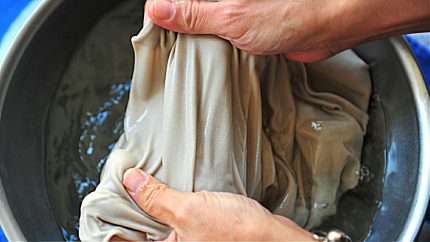
With constant contact with a cloudy, contaminated liquid, allergic reactions occur in children and adults, skin rashes appear and serious diseases can develop.
To avoid these unpleasant moments, it is necessary to organize an effective water filtration system for a private house that can quickly remove all foreign impurities, microbes and other aggressive irritants from the stream.
What does the filtration system consist of?
The household treatment plant consists of the following working components:
- Bottom filter - protects the pump from physical damage and penetration of impurities. Provides high-quality mechanical cleaning. It is equipped with an additional filter to protect against small insoluble, fibrous and particulate matter.
- Aeration column - enriches the supplied water with oxygen, accelerates oxidative processes, while simultaneously freeing the liquid from hydrogen sulfide and active chemical compounds.
- Filtration unit - separates and removes sediment left by foreign substances. It is completed with filters of different types, depending on the quality of the available water and the presence of specific compounds in it.
- Biological barrier - quickly destroys microorganisms in the water using ultraviolet radiation or special coal composition.
- Fine cleaning - The final step in the filtering process. At this moment, residual impurity fragments preserved from the previous stages of purification are finally removed from the water.
Sometimes, to improve the basic processing indices, a progressive membrane membrane is included in the system reverse osmosis filter.
It provides the maximum level of purification, but significantly increases the consumption of water resources.
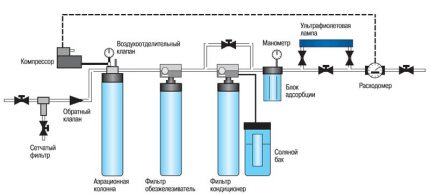
For the complex to work efficiently, it needs to be serviced regularly. In the ion block, it is necessary to change the resin from time to time, and rinse the magnetic softeners, washing off the glandular deposits.
If a coarse wash filter is installed in the home cleaning system, it is recommended that the contaminated water sometimes be drained from its flask by connecting to a drain hose fitting. This greatly simplifies the process of equipment maintenance and extends its service life.
Classification of equipment by location
Household water purification systems are main and flow. The former are built directly into the water supply line where an individual pipe enters the centralized communication complex.
The second are located under the sink or put directly on the tap. Each option has its own characteristics that determine the zone of its effective use.
The specifics of trunk systems
The cleaning modules of the main type demonstrate high efficiency and successfully fight against mechanical and chemical pollution. For correct operation, they require a water passability of 20-50 l / min. Improve the overall quality and taste of the liquid.
Reduce the load on household appliances and increase its operational life. Provide property owners with quality water suitable for drinking, cooking and other household needs. They are reliable and serve for a long time with appropriate care.
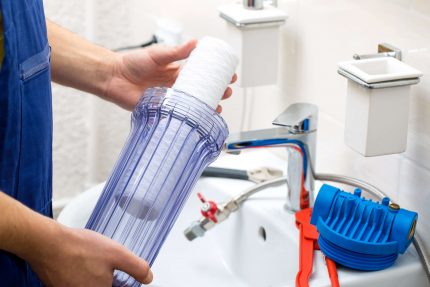
The installation of the system should be carried out by a qualified specialist, and the subsequent replacement of the used cartridges with new ones, the owners will be able to do on their own at the moment when the right time comes or a visual inspection will reveal noticeable contamination.
Features of flowing equipment
Flow-through cleaning systems are easily mounted under the sink near the mixer location. Even simpler options are available in the form of nozzles and are attached to the feed tap with special clamps.
For country houses, such devices are chosen very often due to elementary installation and undemanding to intramineral water pressure.
Flowing filters for washing cannot effectively soften water and purify it from mercury compounds. Reverse osmosis systems can cope with this task, but their installation requires a lot of space, and the purchase requires solid free financial resources.
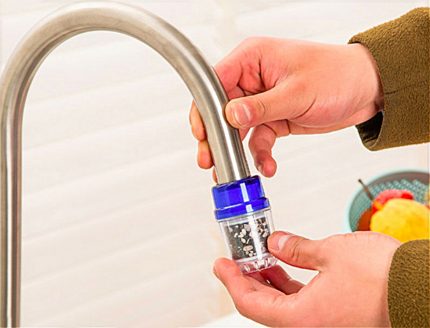
Types of filters for the treatment system
Water entering the faucet from a centralized water supply system, individual well or well may have natural and man-made pollution.
Not even one of the most powerful filters can simultaneously remove all types of harmful substances.
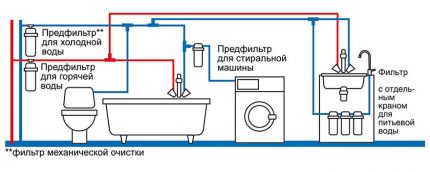
To organize effective cleaning, the equipment will have to be equipped with several cleaning tools at once.
The following filter types are required:
- Rough cleaning - looks like a grid with cells. It is placed first and removes large fragments of mechanical and fibrous insoluble impurities from the incoming water stream.
- Fine cleaning - consists of a fine-meshed membrane, sorbent backfill and a polymer filler. It is mounted second and is responsible for the elimination of oil products, nitrates and nitrites, heavy metals and other chemical elements that can harm human health.
- Softener - contains ion-exchange resin. Promotes the replacement of magnesium and calcium particles with sodium ions. The reverse osmosis filter copes with the same task. Water in this case passes through several thin membranes, is purified from all impurities and at the outlet contains only useful oxygen molecules.
- Disinfecting barrier - provides for the treatment of a water stream that is safe for human health by UV rays. Effectively destroys harmful bacteria and microorganisms, does not change the structure of the liquid, preserves the beneficial properties and natural natural taste of water.
The cleaning, organized by a multi-stage complex principle, provides deep processing of water masses and completely removes all common pollution.
The home communication system receives high-quality, clean water, suitable for any domestic needs and absolutely safe for the health of children and adults.
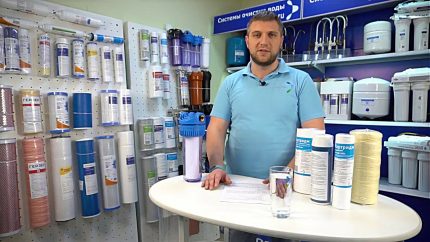
When purchasing filters, it is better to give preference to branded products.Named modules from dubious manufacturers will cost less, but will not cope with the task and will not provide the desired level of cleaning. In addition, they clog much faster and require more frequent replacement.
Recommendations for the selection, installation and connection of coarse and fine filters are presented in this article.
Effective Cleaning Methods
For high-quality water purification in a private country cottage, three modern, practical methods are relevant: reagent, non-reagent, ultraviolet.
Each has its own specific features, advantages and disadvantages. Based on them, the area of maximum effective application is selected.
Option number 1 - cleaning reagent
The reagent option provides for metered use for cleaning special active ingredients. Once in water, they enter into physical and chemical contact with foreign impurities and transform the result of mixing into foam and sediment.
The type of reagent is selected individually, depending on the substances that pollute the water.
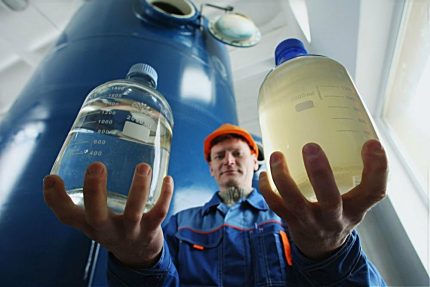
With all the positive aspects, the use of reagents has a negative side. The volumes of impurities in water vary with the season.
To ensure that the cleaning is always at a high level, you need to take samples regularly conduct water analysis and adjust the dose of the working components. This is not convenient, but also requires additional physical, time and material costs.
Of course, you can refuse to take measurements and always use the average volume of reagents, but this approach will not allow you to get efficiently purified water suitable for domestic use year-round.
Specialists and doctors claim that the liquid treated with reagents is suitable only for household needs and irrigation. To cook on such water or to use it as food is extremely undesirable.
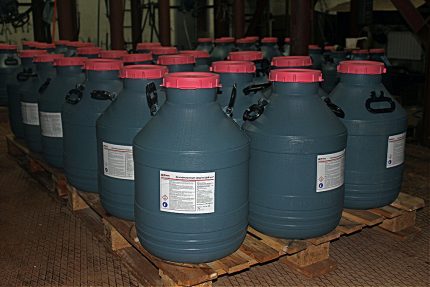
Option number 2 - reagent-free technique
A non-reagent method of purifying water mass from foreign impurities is based on the use of various types of filtration units, aeration columns and a powerful air compressor.
It is considered a more practical, modern and effective method. Saturates a liquid with oxygen molecules. Removes heavy elements, harmful substances and other components, when dissolved in water, harmful to the human body. It can purify water of any pollution level to the quality of drinking.
The method is equally relevant for autonomous water supply systems powered by deep-water wells, as well as for tanks with shallow and medium depths.
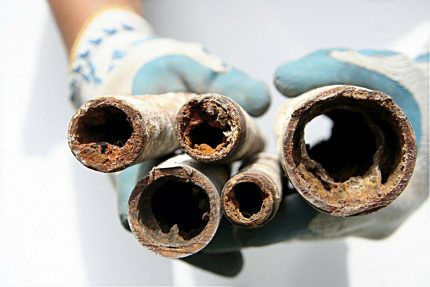
Option number 3 - purification with ultraviolet
Ultraviolet treatment disinfects the water stream, affects the metabolism in the cells of microorganisms and neutralizes all harmful substances. In the process of purification, the structure of the liquid does not change and its quality does not deteriorate. All useful elements retain their original physical characteristics.
The method is suitable both for solo use and for working as an integral part of a private multi-level complex for the purification of drinking water.
The main advantages of this option:
- complete environmental safety;
- rapid liquid disinfection and the complete destruction of microbes, bacteria and other household irritants by destroying the structure of their DNA;
- low cost - components do not require replacement;
- lack of restrictions on service life;
- preservation of the natural taste of the water;
- the convenience of use.
The main disadvantage is the inability to eliminate chemical compounds. It is not too convenient that the water treated with ultraviolet should be consumed immediately.
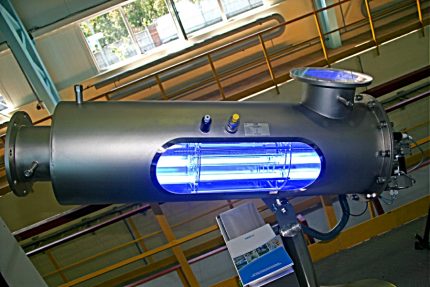
Tips for choosing a filtration system
When choosing a treatment equipment, it should be remembered that for proper functioning it needs a lot of free space. This area should be prepared in advance and set up accordingly.
If you plan to buy high-performance semi-professional modules, you need to allocate a separate heated room for them.
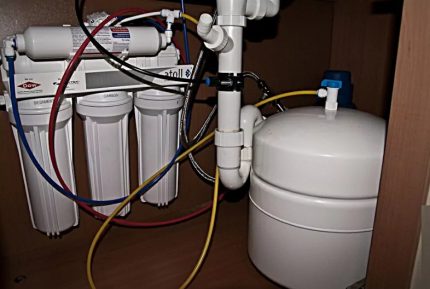
It is desirable that furniture elements or any other objects that could damage the overall integrity of the structure do not closely adjoin the treatment plant. There should not be near very warm things.
External filter flasks are made of plastic and can melt when exposed to excessively high temperatures.
It is completely optional to undergo multistage purification of all water entering the house. The main processing complex should be placed in the kitchen, where the most pure drinking water is really required.
At the entrance to the main communication system, it is enough to install coarse filters that prevent the penetration of solid, insoluble elements into the system.
Buying the most expensive treatment system, designed immediately for 4-5 working flasks, is not necessary. Such aggregates will need to be equipped with several specific filters, and this is serious material waste, moreover, not always justified.
It is more reasonable to conduct laboratory analysis of water in your tank and its surroundings before buying, carefully study this important information and clearly determine what it is really necessary to purify water from.
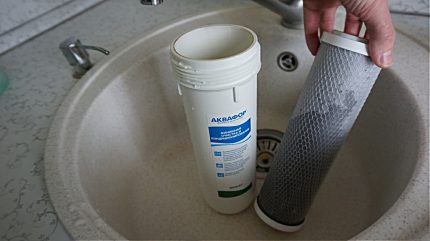
When the water is defined as soft, there is no need to install an additional softener filter. Continuous consumption of excessively treated fluid in the future can cause significant harm to health.
If during the verification process an excess of iron and fragments of salts of heavy metals is revealed in water, it is worthwhile to equip the treatment system with filtration units aimed at removing these aggressive components.
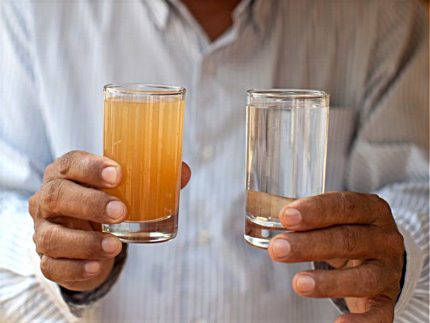
The best filtration tools will do the best with the removal of glandular compounds:
- softeners with special fillings equipped with a saline tank for recovery;
- manganese dioxide-based disinfectants;
- reverse osmosis modules separating impurities from water at the molecular level;
- coconut shell coal blocks with pronounced absorbent characteristics;
- magnetic elements that change the structure of heavy salts with a magnetic field and stimulate their precipitation into an insoluble precipitate held by the final post-filter insert.
Ultraviolet and ozonation, despite the modernity and effectiveness, can only eliminate bacterial iron. Get rid of rust with their help will not work.
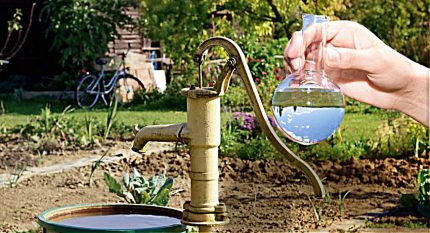
Some cleaning systems have separate filters for cold and hot water. From the cold stream they remove impurities that are harmful to humans and adversely affect various household appliances, and in the hot stream they reduce the level of scale and eliminate decay products formed as a result of heating the liquid.
When planning the purchase of a treatment system, it is necessary to take into account its throughput. If it is too low, the full use of water will not work. With the simultaneous opening of two or more taps, the head will surely sag.
To prevent this from happening, you can equip the cleaning system with a capacious storage tank. This will make it possible to take water from the source not according to the schedule, but according to personal needs and requirements.
Conclusions and useful video on the topic
The principle of operation of the water purification system in a country house:
How to choose the right complex for effective water treatment at the cottage:
Methods for removing glandular compounds from running water. What is more effective - aerators or filters with ionic resins:
A well-equipped cleaning system will provide the country house with quality water suitable for drinking, use in food and various household needs. In order to properly equip the equipment with filters, you will have to take a sample of the fluid available in the area and find out what contaminants it needs to be freed from.
Share with your readers your experience in choosing and arranging a home wastewater treatment system. Please leave comments, ask questions about the topic of the article and participate in discussions - the feedback form is located below.

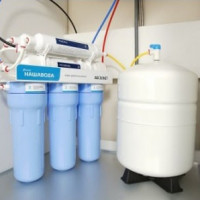 Reverse osmosis: the harm and benefits of membrane purification of tap water
Reverse osmosis: the harm and benefits of membrane purification of tap water 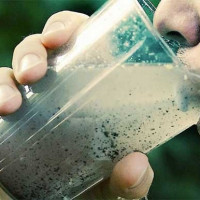 Rating of water filters for washing: rating of the best models and selection guide
Rating of water filters for washing: rating of the best models and selection guide 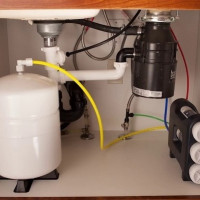 How reverse osmosis works: the principle of operation of fine water purification devices
How reverse osmosis works: the principle of operation of fine water purification devices 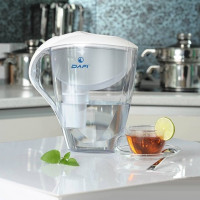 Water purification filter for a summer residence: selection tips + an overview of the best brands
Water purification filter for a summer residence: selection tips + an overview of the best brands 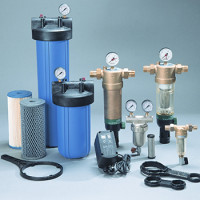 Filters for rough and fine water purification: overview of types + installation and connection rules
Filters for rough and fine water purification: overview of types + installation and connection rules 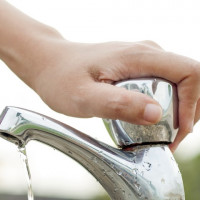 How to save and read water by the meter: modern devices and methods of saving
How to save and read water by the meter: modern devices and methods of saving 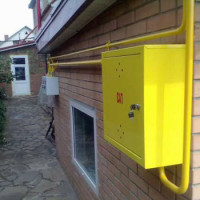 How much does it cost to connect gas to a private house: the price of organizing gas supply
How much does it cost to connect gas to a private house: the price of organizing gas supply 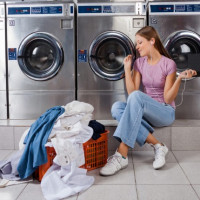 The best washing machines with dryer: model rating and customer tips
The best washing machines with dryer: model rating and customer tips 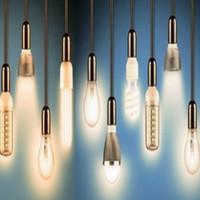 What is the color temperature of light and the nuances of choosing the temperature of the lamps to suit your needs
What is the color temperature of light and the nuances of choosing the temperature of the lamps to suit your needs 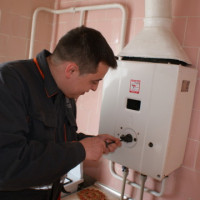 Replacement of a geyser in an apartment: replacement paperwork + basic norms and requirements
Replacement of a geyser in an apartment: replacement paperwork + basic norms and requirements
Just now I’m dealing with the issue of acquiring and installing high-quality filters. However, after reading the article I had some questions. First, why put a separate prefilter on the washer? Will one at the entrance be enough? And the second - I do not see any reason to put the prefilter on hot water, since I use it exclusively to dilute the cold while bathing or washing my hands. Hot water does not participate in contact with the same washer, and I pour extremely cold into the kettle. Sense to splurge?
In order to better purify the water, otherwise the heater may burn out, but this of course also depends on the heater in your washing machine - if it is covered with a thin ceramic layer, then it is more resistant to scale.
Membrane filters (osmosis) are very popular right now. But it seems that few people think that the complete desalination of water is not so good. Well, at least not always. Everyone is so afraid of salts of heavy metals. that they’re ready to drink almost distilled water.And the body needs salts, not for nothing to improve health and treat many diseases they drink mineral water, with a high content of salts.
It's like that. But no one bothers to buy a mineralizer to the reverse osmosis filter, which will return useful minerals to water. But it will be pure water that can be drunk without fear.